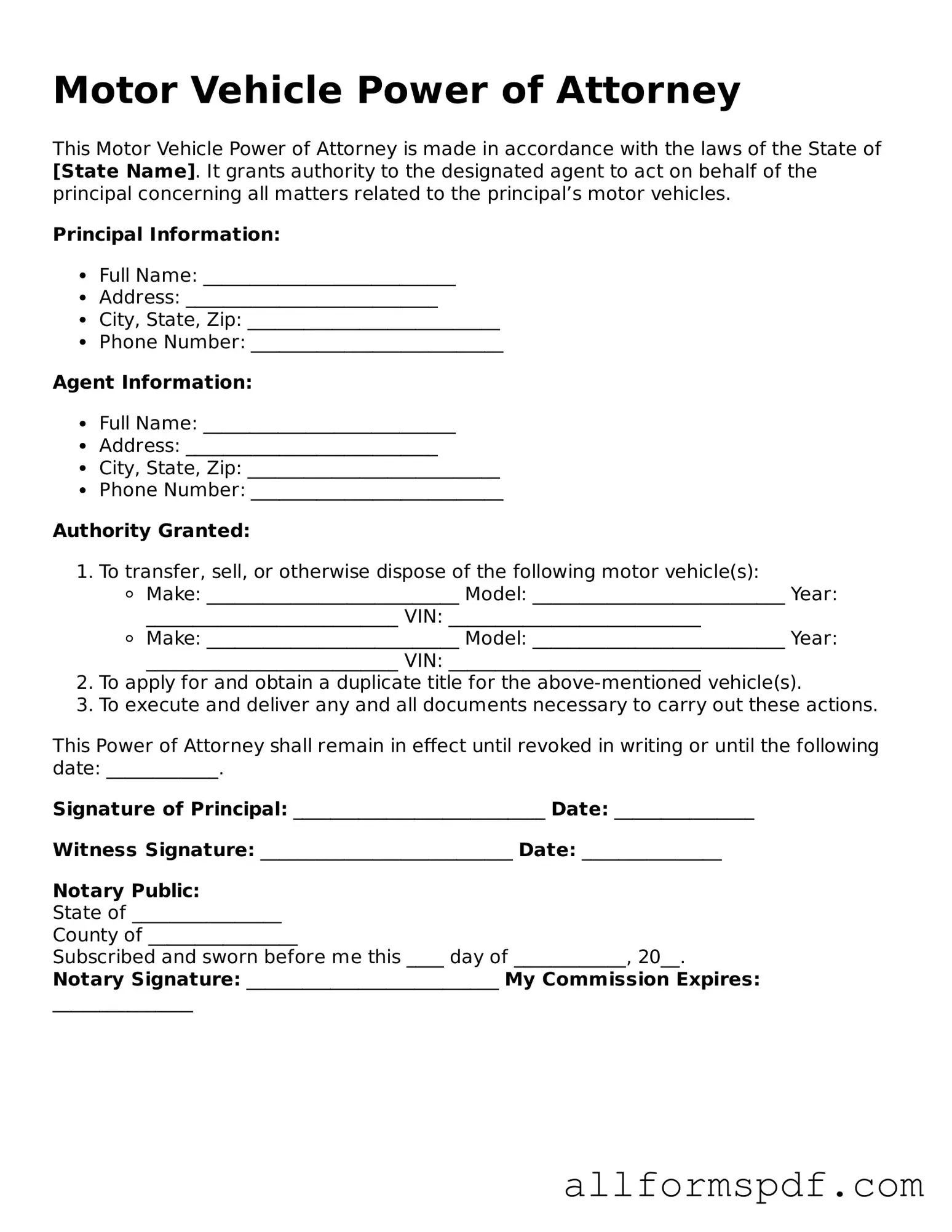Filling out a Motor Vehicle Power of Attorney form can seem straightforward, but many people stumble over common mistakes that can lead to complications down the road. One of the most frequent errors is failing to provide accurate information about the vehicle. This includes the Vehicle Identification Number (VIN), make, model, and year. If any of this information is incorrect or missing, it can create confusion and potentially invalidate the power of attorney.
Another common mistake is not properly identifying the agent. The person designated to act on your behalf must be clearly named and their relationship to you should be specified. Leaving this section vague can lead to misunderstandings and disputes later. It’s crucial to choose someone trustworthy and capable of handling the responsibilities that come with this authority.
Many individuals also overlook the importance of signatures. Both the principal (the person granting the power) and the agent must sign the document. If either signature is missing, the form may not be legally binding. Additionally, some states require notarization or witnesses, so it’s essential to check your local requirements before submitting the form.
Lastly, people often forget to specify the scope of authority granted. The Motor Vehicle Power of Attorney should clearly outline what the agent can and cannot do. For instance, can they sell the vehicle, register it, or simply handle paperwork? Without clear guidelines, the agent may overstep their boundaries, leading to potential legal issues.
